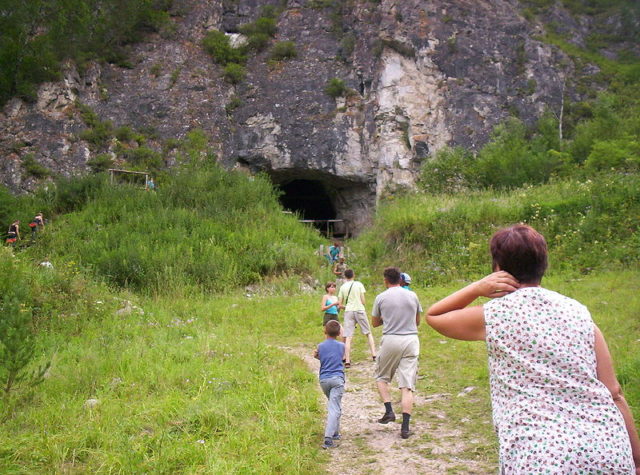A recent find has confirmed that the Ovodov horse, a squat breed of the horse once common in southern Siberia, was still around 24,000 years ago. Until this find, it was believed the animal had died out 400,000 years ago.
It is hard to say what this horse looked like, except that it was larger than a zebra or donkey and possibly had discreet coloring to help it blend in with its environment. There is no chance of a full body being found in permafrost, as the horse didn’t travel that far north. There are no known cave paintings of the horse either.

The horse is thought to have lived in the Anyui valley, and grazed on grass rather than browsed on bushes. High in the Denisova caves, the people there would have been able to see herds coming and were quite likely to hunt them for food and skins.
There are no known cave paintings of the horse either. The horse is thought to have lived in the Anyui valley, and grazed on grass rather than browsed on bushes. High in the Denisova caves, the people there would have been able to see herds coming and were quite likely to hunt them for food and skins.

The Denisova caves in Altai were home to three species of man – the ancient Homo sapiens, the Denisovans, and the Neanderthals. Scientists doubt that ancient man killed off this equine species; many of them think that climate change was the culprit and the eventual cause of the horse’s extinction. The horse belongs to the subgenus Sussemionus; this subgenus lived between one million and 500,000 years ago and then became extinct 400,000 years ago. Other of the subspecies found in different areas of the world had already died out, so the Siberian find shows that Sussemionus had already existed beyond its time anyway.
Scientists are quite excited that the Ovodov horse, found in the Altai region and at other sites in Siberia, appears to have survived and prospered so much longer than other species of horse in this group, The Siberian Times reported.

Some of their bones have been found in the Siberian caves, but most of the remains of horses found are from caballine horses and the Asiatic wild ass. DNA evidence suggests that Ovodov was short-legged and small, not slender as horses are today.
Read another story from us: An ancient grave of two lovers holding hands unearthed in Siberia
It would have weighed approximately 300 kilograms and have been about 143-145 centimeters in height. A whole skeleton of this horse has not been found, only bones inside the caves which could have been deposited there by ancient people or wild animals. The bones that are found are often quite damaged.
